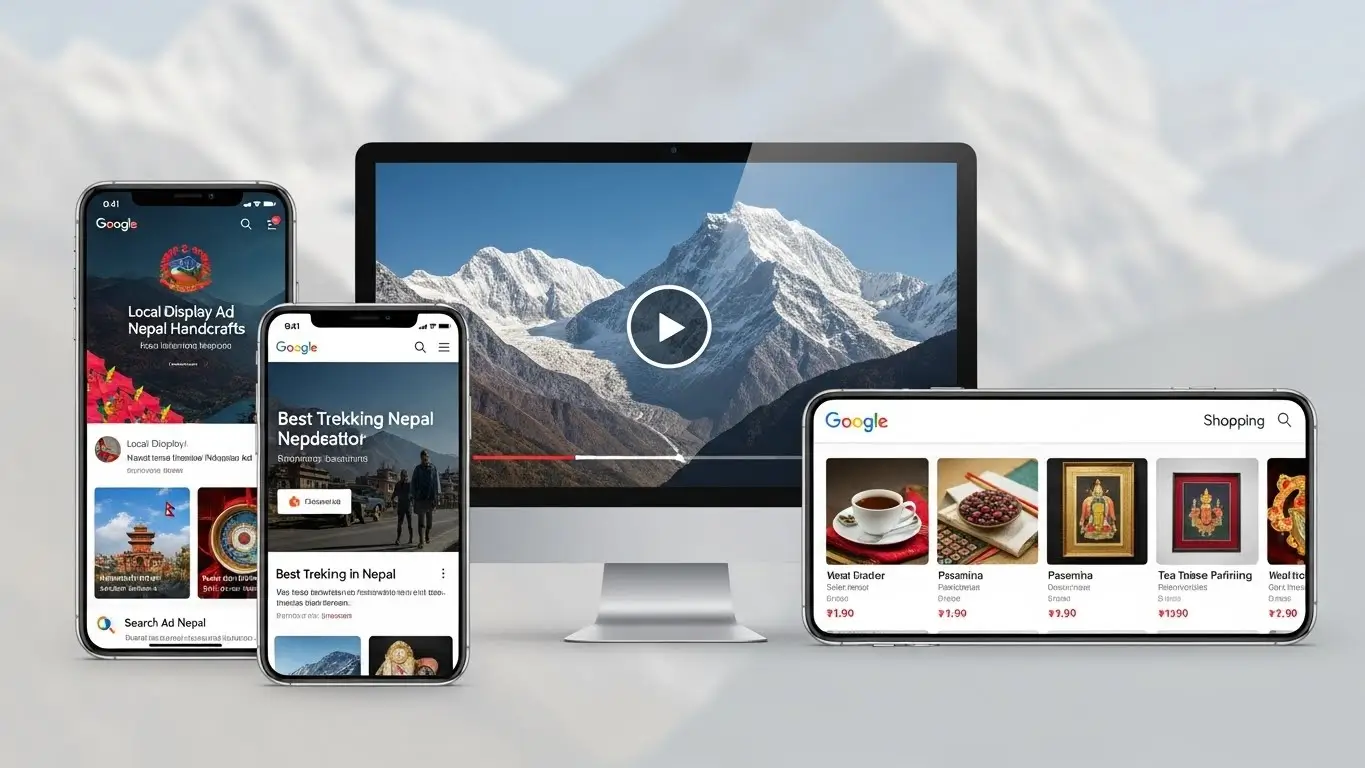Social Media-Work Life Balance 2026
In the digital age, the interplay between our professional and personal lives is profoundly affected by the emergence and growth of social media. These platforms, ranging from the ubiquitous Facebook and Twitter to Instagram and LinkedIn, have seeped into almost every aspect of our existence. For many, maintaining a delicate balance between their social media activities and work life is a challenge that can significantly impact their well-being, productivity, and relationships.
Social media platforms have brought about a seismic shift in the way we connect, communicate, and access information. These digital realms offer unique opportunities for networking, self-expression, and personal branding. However, with their immense growth, complexities, and increasing demands on our time have emerged. It’s vital to navigate this landscape effectively:
A. The Positives
Social media, in many ways, acts as a catalyst for professional networking and career advancement. Platforms like LinkedIn have become instrumental in helping individuals showcase their skills, connect with like-minded professionals, and stay updated on industry trends. This interconnectedness has fostered an environment where career opportunities often lie just a click away.
However, the sword of social media is double-edged. Maintaining an active and appealing online presence demands time, effort, and strategy. To harness the power of these platforms, you must curate your content, engage with your network, and present yourself professionally. This process can be a rewarding investment in your career, but it’s not without its demands.
B. The Negatives
The perils of social media are no secret. They manifest in the form of potential distractions that can be ever so tempting. Scrolling through endless feeds, binging on viral videos, and getting embroiled in contentious online debates can drain precious hours from our workday. What seems like a five-minute “break” can turn into an hour of lost productivity.
Moreover, the unceasing deluge of information that social media platforms provide can lead to a phenomenon known as “information overload.” This is when the sheer volume of content and notifications becomes overwhelming, making it difficult to focus and process information effectively. This overload can create stress and anxiety, particularly when you feel the need to keep up with a fast-paced digital world.
C. Striking a Balance
The social media landscape is a realm of contrasts – it offers boundless potential while also posing formidable challenges. So, how do we strike a balance?
Set Clear Goals: Define your objectives for using social media. Is it for professional networking, personal expression, or a combination of both? Setting clear goals will guide your online activities.
Manage Your Time: Be conscious of the time you spend on social media. Use productivity techniques like the Pomodoro method to balance work and online engagement effectively.
Curate Your Network: Consider the quality of your connections over the quantity. Connect with people who align with your professional goals and interests.
Information Diet: Be selective about the content you consume. Follow accounts and pages that provide value and knowledge relevant to your field.
Mindful Engagement: Don’t fall into the trap of endless scrolling. Engage with purpose and intention. Respond to comments, share meaningful insights, and actively participate in conversations that matter to you.
Digital Detox: Take breaks from social media when necessary. A digital detox can help you reset and reduce the feeling of being overwhelmed.
The Challenge of Work-Life Balance

Striking the right equilibrium between work commitments and personal life has always been a struggle. In today’s fast-paced world, where technology and social media have become an integral part of our lives, this challenge has grown even more complex. The constant connectivity and the allure of social media have made it even harder to find that elusive balance.
The Myth of Multitasking
Many of us might think that checking our social media accounts while working is a form of multitasking, a way to maximise our time and efficiency. However, research suggests that true multitasking is somewhat of a myth. In reality, our brains are not designed to perform multiple complex tasks simultaneously. They may switch between tasks quickly, but in doing so, they become less effective at each one.
Imagine you’re at work, trying to focus on a critical project, and your phone pings with a social media notification. Your brain switches from the project to the notification and then back again. This constant back-and-forth can lead to cognitive fatigue, decreased productivity, and lower-quality work. In essence, attempting to balance work and social media can actually result in neither being done well.
The Always-On Culture
The advent of social media and the widespread use of mobile devices have given rise to what’s known as the “always-on” culture. It’s a culture where work can intrude into personal life, and personal life can spill into work at any time. While this interconnectedness may have its benefits, it has significant downsides too.
Thanks to the “always-on” culture, work emails are accessible on our smartphones at all hours. Social media platforms keep us connected to our professional networks, even outside the traditional workday. This blurring of boundaries between work and personal time can lead to various problems.
Firstly, it can result in burnout. The constant pressure to be available and responsive can take a toll on mental and emotional well-being. The expectation to always be on top of work-related matters can lead to exhaustion and a feeling of being overwhelmed.
Secondly, the “always-on” culture can cause increased stress. The inability to disconnect from work, even when at home or on vacation, leads to chronic stress. This stress, if not managed, can have severe health consequences.
Thirdly, it can strain personal relationships. Imagine being at a family gathering, but your mind is preoccupied with responding to work emails or checking your social media notifications. This detachment from your loved ones can harm your relationships and hinder your ability to be fully present in personal moments.
Finding the balance between work and personal life is more challenging than ever, thanks in part to social media and the “always-on” culture. It requires setting clear boundaries, time management, and the ability to disconnect from work when necessary. While technology has brought us many advantages, including the ability to work remotely and stay connected, it’s essential to recognize its potential downsides and actively take steps to maintain a healthy work-life balance. In doing so, we can reap the benefits of both a successful career and a fulfilling personal life.
Strategies for Balance
Balancing social media and work life is a task that many of us face in our modern, digitally connected world. It can be challenging, but it’s far from insurmountable. With the right strategies in place, you can enjoy the benefits of social media while still safeguarding your professional focus and personal well-being. Here are some practical tips to help you strike that balance:
1. Set Boundaries:
The first step in finding equilibrium between social media and work is to establish clear boundaries. Define specific times during your day when it’s acceptable to engage with social media. These boundaries can help you protect your work time and personal life. You might find techniques like the Pomodoro Technique useful. It involves focused work intervals, usually 25 minutes, separated by short breaks. During these breaks, you can catch up on social media without it encroaching on your work.
2. Prioritise Tasks:
Effectively managing your time is essential for maintaining a healthy balance. Prioritise your daily tasks and allocate dedicated time for both work and social media activities. There are various task management apps available that can help you organise your workday efficiently. By scheduling your time thoughtfully, you can ensure that neither work nor social media dominates your day, allowing you to attend to both responsibly.
3. Use Social Media Mindfully:
Mindfulness is a practice that can be applied to your social media usage. Instead of mindlessly scrolling through endless content, use social media with a purpose. Set specific goals for your time spent online. For instance, if you’re using LinkedIn, focus on professional networking and career development. Join industry groups and follow pages that provide valuable insights and connections related to your field. This purposeful engagement can make your social media time more productive and meaningful.
4. Unplug Regularly:
Now and then, it’s essential to step away from the digital world. Consider taking time to unplug from social media entirely. This could be as simple as dedicating a few hours each evening to disconnect from your devices or going for a full “digital detox” weekend. Unplugging allows you to recharge, clear your mind, and reconnect with your offline life. It’s a valuable practice for maintaining a healthy work-life balance.
5. Reflect and Adapt:
Regular self-assessment is a crucial part of this balancing act. Periodically, take a step back and reflect on your social media habits. Consider how they are affecting your career and personal life. Are they enhancing your connections, knowledge, and well-being, or are they causing harm, like distractions or stress? If you notice that social media is becoming a source of negativity or is interfering with your work or relationships, don’t hesitate to adjust your strategies. It’s a sign of wisdom to adapt to your evolving needs and priorities.
Remember that you’re not alone in facing this challenge. Many people grapple with the impact of social media on their lives. If you ever find yourself struggling to regain control over your social media usage, don’t hesitate to seek support or counselling. Recognising when you need help is a sign of strength, and professionals can offer guidance and strategies for managing your digital life more effectively.
Balancing social media and work is indeed achievable. By setting boundaries, prioritising tasks, using social media mindfully, taking regular breaks from it, and regularly assessing your habits, you can harness the benefits of social media while preserving your professional focus and personal well-being. This balance is the key to making the most of the digital age without sacrificing your real-world happiness and productivity.
The Future of Work-Life Balance in the Social Media Age
As we journey further into the digital age, the concept of work-life balance is transforming. The rise of technology and the advent of social media have ushered in new challenges and opportunities, fundamentally reshaping the way we balance our professional and personal lives. In this exploration of the future of work-life balance in the social media age, we’ll uncover the evolving landscape and the strategies individuals can adopt to navigate it successfully.
A. Remote Work and Flexibility
The COVID-19 pandemic served as a catalyst, accelerating the adoption of remote work. As we look to the future, remote work and flexibility will likely remain a prominent feature of the employment landscape. While this offers the advantage of working from the comfort of one’s home, it simultaneously presents challenges. The lines between the workspace and living space blur, and individuals may find themselves facing difficulties in maintaining clear boundaries.
In a world where your office is just a few steps away from your bedroom, achieving work-life balance requires a conscious effort. To adapt, individuals may need to set strict schedules, create dedicated workspaces, and establish limits on working hours. The future demands a keen awareness of the potential pitfalls of remote work while embracing the freedom it offers.
B. AI and Automation
Artificial intelligence (AI) and automation are poised to revolutionise the workforce. Machines can now perform tasks that were once exclusively in the realm of humans. Routine, repetitive tasks can be efficiently executed by AI, potentially reducing workloads and granting individuals more control over their time.
The future of work-life balance is intertwined with the intelligent integration of technology. As AI and automation take over repetitive tasks, individuals can redirect their focus toward tasks that require creativity, emotional intelligence, and critical thinking—areas where humans excel. However, managing this transition requires adaptation. It means individuals must be open to upskilling, learning to collaborate effectively with machines, and embracing the new opportunities that arise.
C. Augmented Reality
The integration of augmented reality (AR) is another facet of the evolving work-life landscape. Augmented reality enhances our physical environment with digital information, and it’s increasingly becoming part of our daily lives. In the context of social media, AR has the potential to provide new and immersive ways to connect and engage with others.
While AR can be a powerful tool for communication and collaboration, it also has the potential to blur the lines between the digital and physical worlds. Individuals must be prepared to manage this integration. Maintaining work-life balance means understanding when to disconnect from the digital realm and immerse oneself in the physical world. Finding the right equilibrium will be a critical aspect of the future of work-life balance.
Conclusion
The future of work-life balance in the social media age is an ever-evolving journey. As we navigate this intersection, it’s important to recognise the power and perils of social media and digital technology. The choices we make today will shape our future. To successfully manage work-life balance in this dynamic landscape, consider the following strategies:
1. Set Boundaries: Establish clear boundaries between work and personal life. Define your work hours and leisure time, and stick to them. Creating physical and mental space for both is essential.
2. Use Social Media Mindfully: Social media can be a valuable tool, but it can also be a source of distraction and stress. Be mindful of your social media usage. Limit the time spent on these platforms, and avoid mindless scrolling.
3. Adapt to Change: Embrace the evolving digital landscape. Be open to learning new skills, collaborating with AI, and exploring new opportunities that arise from technological advancements.
Work-life balance in the social media age is a balancing act that’s as unique as the individuals who undertake it. By being aware of the challenges and opportunities presented by remote work, AI, automation, and augmented reality, we can make informed choices that promote a healthier, happier, and more productive life. The future beckons, and with the right strategies, we can embrace the advantages of social media and technology without sacrificing our well-being and the harmony between our personal and professional lives.



